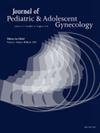28. Differences in Vaginoplasty When Performed in Childhood Versus Adulthood: A National Surgical Quality Improvement Program Study
IF 1.8
4区 医学
Q3 OBSTETRICS & GYNECOLOGY
引用次数: 0
Abstract
Background
Vaginoplasties are performed for a variety of congenital or acquired indications from childhood through adulthood. There are considerable gaps in understanding whether the conditions treated by vaginoplasty or the associated risk of complications differ between pediatric and adult patients. This study aimed to assess types of vaginoplasties, underlying diagnoses, and complication rates in children and adults using large multicenter databases.
Methods
This retrospective cohort study utilized data from the American College of Surgeons National Surgical Quality Improvement Program adult and pediatric databases from 2012 to 2021. Children (aged < 18 years) and adults (greater than or equal to 18 years) who underwent vaginoplasty for any reason were identified using Current Procedural Terminology (CPT) codes for vaginoplasties performed. Multivariable logistic regression analyzed differences in diagnoses, surgeon specialties, and 30-day complications. This study was exempt from Institutional Review Board approval.
Results
We identified 232 children (mean age 6.2 years) and 209 adults (mean age 36.7 years) who underwent vaginoplasty. Surgical specialty differed between children and adults. Pediatric urology performed the majority of vaginoplasties in children, whereas plastic surgery performed the majority in adults (75% vs 70%, p< 0.001). Gynecology performed a similar percentage of procedures in both groups. The type of vaginoplasty also varied. Children underwent vaginoplasties coded as both with and without grafts (57291, 57292, 57335), but adults only underwent vaginoplasties coded with grafts (57335). Surgical indication also significantly differed with 97% of childhood vaginoplasties being for urethrovaginal conditions and 85% of adult vaginoplasties being for gender dysphoria. Overall, 30-day complications were comparable and relatively low in both groups. Adults were more likely to have a documented wound dehiscence (0% vs 5%; p< 0.001). Wound dehiscence occurred in isolated urethrovaginal procedures and gender dysphoria cases, with 82% of all disruptions found in the latter group.
Conclusions
We identified differences in surgery type, surgeon specialty, and diagnoses when comparing vaginoplasties performed in children and adults. Although complications were low overall, wound dehiscence was more common in adults, likely due to complexity in gender affirming vulvovaginoplasties. More research is needed to understand these differences, to optimize surgical techniques, and improve patient care across all ages.
28. 儿童期和成人期阴道成形术的差异:一项国家手术质量改进计划研究
背景阴道成形术适用于从儿童期到成年期的各种先天性或获得性适应症。在了解阴道成形术治疗的情况或相关并发症的风险在儿童和成人患者之间是否存在差异方面存在相当大的差距。本研究旨在利用大型多中心数据库评估儿童和成人阴道成形术的类型、潜在诊断和并发症发生率。方法:本回顾性队列研究利用2012年至2021年美国外科医师学会国家手术质量改进计划成人和儿科数据库的数据。儿童(年龄<;18岁)和成人(大于或等于18岁)因任何原因接受阴道成形术,使用阴道成形术的现行程序术语(CPT)代码进行鉴定。多变量逻辑回归分析了诊断、外科医生专业和30天并发症的差异。本研究免于机构审查委员会的批准。结果232例儿童(平均年龄6.2岁)和209例成人(平均年龄36.7岁)行阴道成形术。儿童和成人的外科专科不同。儿童泌尿外科做了大多数的阴道整形手术,而成人整形外科做了大多数(75% vs 70%, p<;0.001)。两组的妇科手术比例相似。阴道成形术的类型也各不相同。儿童接受的阴道成形术编码为有和没有移植(57291,57292,57335),但成人只接受移植编码的阴道成形术(57335)。手术指征也有显著差异,97%的儿童阴道成形术是针对尿道阴道疾病,85%的成人阴道成形术是针对性别焦虑。总的来说,两组患者30天的并发症相当且相对较低。成年人更有可能有记录在案的伤口裂开(0%比5%;术中;0.001)。伤口开裂发生在单独的尿道阴道手术和性别焦虑症病例中,后者占所有破裂病例的82%。结论:在比较儿童和成人的阴道成形术时,我们发现了手术类型、外科医生专业和诊断的差异。虽然并发症总体上较低,但伤口开裂在成人中更为常见,可能是由于性别确认外阴阴道成形术的复杂性。需要更多的研究来了解这些差异,优化手术技术,并改善所有年龄段的患者护理。
本文章由计算机程序翻译,如有差异,请以英文原文为准。
求助全文
约1分钟内获得全文
求助全文
来源期刊
CiteScore
3.90
自引率
11.10%
发文量
251
审稿时长
57 days
期刊介绍:
Journal of Pediatric and Adolescent Gynecology includes all aspects of clinical and basic science research in pediatric and adolescent gynecology. The Journal draws on expertise from a variety of disciplines including pediatrics, obstetrics and gynecology, reproduction and gynecology, reproductive and pediatric endocrinology, genetics, and molecular biology.
The Journal of Pediatric and Adolescent Gynecology features original studies, review articles, book and literature reviews, letters to the editor, and communications in brief. It is an essential resource for the libraries of OB/GYN specialists, as well as pediatricians and primary care physicians.

 求助内容:
求助内容: 应助结果提醒方式:
应助结果提醒方式:


